Autos
A car fit for a queen
New $342,000 Rolls-Royce SUV will leave you speechless
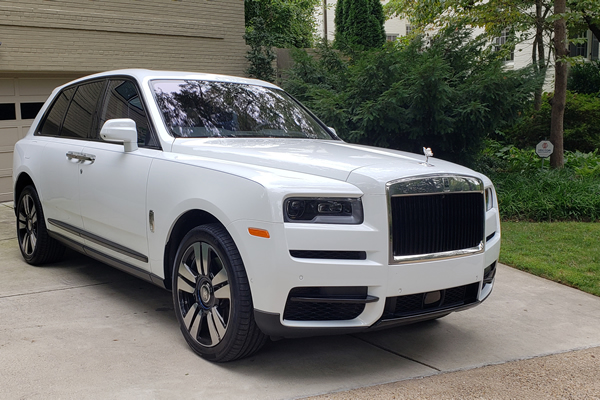
Last month, I was invited to test drive the ultimate SUV: a Rolls-Royce Cullinan. My partner Robert and I—nerdy fans of all things BritBox—decided to take this swanky ride on a two-day outing to Charlottesville. After all, meandering along Virginia’s bucolic backroads was the closest we were going to get to an English countryside. While we were trying to summon forth our inner Mr. Darcy, we discovered quite a few fun surprises in this regal SUV along the way.
Rolls-Royce Cullinan
$342,000
Mpg: 12 city/20 highway
0 to 60 mph: 4.5 seconds
The Cullinan has a noble pedigree, named after the largest diamond ever found—a hefty 1.33-pound gem that is now part of the British Crown Jewels. There are other royal connections to Rolls-Royce, of course. Queen Elizabeth—who was trained as a World War II mechanic and, at age 95, still drives herself sometimes—has a vast car collection with many a Rolls. And both Kate Middleton and Meghan Markle arrived at their weddings in a 1950 Phantom IV, made specially for the queen back when she was a mere princess. Yet despite its 114-year lineage, the luxury automaker has worked hard to keep pace with modern tastes and technology.
Hence the Cullinan, the first-ever SUV in the Rolls-Royce stable. This tony horseless carriage has a $342,000 base price that quickly skyrockets with natty options. My test vehicle, for example, was $450,000—including $20,000 for a trendy detailing package. Other notable extras: lambswool floormats, contrast seat piping, black stained ash wood trim, and an embossed “RR” monogram on the doors and headrests. You also can opt for a cooling bin large enough for two Champagne flutes and a whiskey decanter. The best add-on, though, was the starlight headliner. To create the faux nighttime sky, it takes two craftspeople up to 17 hours to perforate 1,900 holes. Then fiberoptic lights are inset at various angles so that each “star” actually twinkles. And—crikey!—there’s even a shooting star feature.
Exterior niceties are just as impressive, such as the anti-spin device to ensure the “RR” logo remains upright on each wheel cap at all times. Depending on customization, those fancy wheels can easily cost $4,000—each. The famous Spirit of Ecstasy hood ornament is available in silver, gold-plated or illuminated polycarbonate. To prevent theft, the statuette automatically disappears beneath the hood when the engine is off. But perhaps the most impressive feature is also the least obvious, at least until you slip behind the wheel and fire up this high-class colossus. That’s when the finely tuned, twin-turbo V-12 engine roars to life and effortlessly glides you down the road.
Driving such a sophisticated land yacht—which weighs almost three tons—feels like riding on a cloud. Surprisingly, there’s little body roll when cornering and no shuddering during quick stops. Think sleek Cutty Sark versus lumbering cruise ship. There were several major storms during our time in this vehicle, causing other drivers to pull off the road or frantically try and outrun the rain. But the Cullinan stayed steady, holding the road as we battered our way through heavy winds and torrential downpours. Another nice touch: Hidden in each of the rear coach doors was a full-size umbrella, which popped out at the push of a button. When we put the wet umbrellas back into their secret compartments, air vents quickly dried them out. Mary Poppins should have been so lucky.
The skies cleared the final day of my test ride, so I sped around the Beltway for one last hurrah. Perhaps because a Rolls-Royce is more refined and understated than any in-your-face Ferrari or Lamborghini, no one tried to race me down the road. Instead, there were lots of approving smiles and a big thumbs up or two. No, I didn’t respond with a royal wave. But I doubt anyone would have blamed me if I did. After all, driving a Cullinan makes you feel like queen for a day.
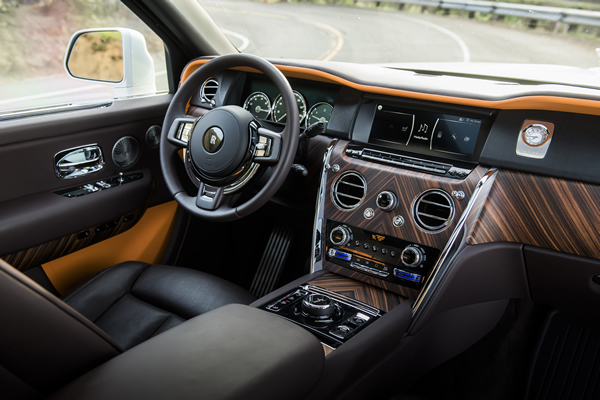
Autos
Sport haulers: Jeep Grand Cherokee, Mercedes GLE-Class
Updated cabins, adept handling, and more
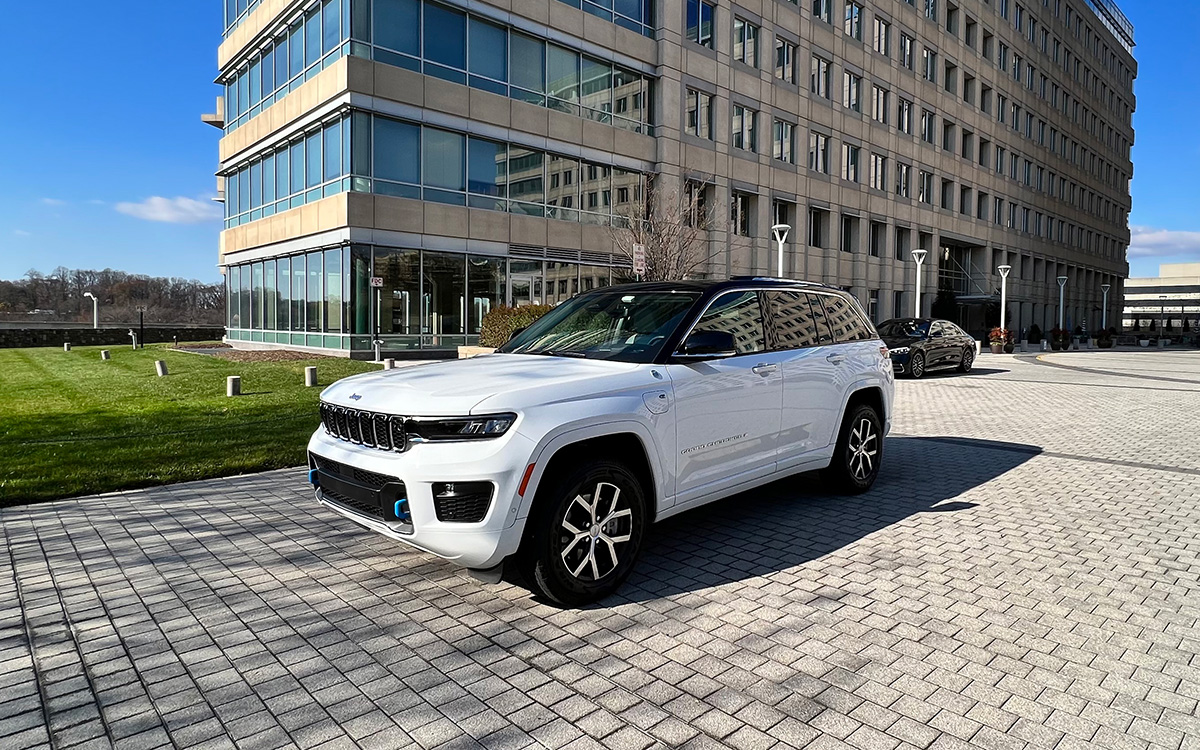
Now that March Madness and the Masters are over, it’s time for, well, everything else. For my husband and me, this means water sports, as in kayaks and rowing sculls, which is why we trekked to the Potomac for the George Washington Invitational regatta last weekend.
Alas, high winds splashed cold water on the event, canceling much of it. But there was still plenty of spirited camaraderie to rival “The Boys in the Boat.”
And I was reminded of my time years ago as a rower with D.C. Strokes, ferrying teammates to races up and down the East Coast. Back then my ride was a dated, rather cramped four-door sedan.
If only we could have paddled around in a sporty SUV like the two reviewed here. Now that would have been some smooth sailing (wink-wink).
JEEP GRAND CHEROKEE
$40,000
MPG: 19 city/26 highway
0 to 60 mph: 7.5 seconds
Maximum cargo room: 37.7 cu. ft.
PROS: Updated cabin, adept handling, strong towing
CONS: So-so gas mileage, no third row, pricey trim levels
IN A NUTSHELL: Rough, tough and buff. It’s doesn’t get much more butch than a Jeep. This year’s Grand Cherokee is no exception, with rugged looks, expert off-road capability and better-than-average towing capacity of 6,200 pounds.
There are a dizzying number of trim levels—more than a dozen—starting with the barebones base-model Laredo at an affordable $40,000. The lineup tops out with the Summit Reserve 4xe PHEV, which is almost twice the price at $76,000 and one of various plug-in hybrid versions available. Those plug-in hybrids can drive up to 25 miles on all-electric power before the four-cylinder gas engine kicks in. Otherwise, you can choose from a standard V6 or V8. Gas mileage on all trim levels is basically the same as the competition.
Where the Grand Cherokee really shines is in the handling. More refined than a Wrangler but less lavish than a Land Rover, this Jeep maneuvers just as well on city streets and highways as it does on bumpier terrain.
I tested the mid-range and mid-priced Overland, which comes standard with four-wheel drive and large 20-inch wheels. It also boasts a slew of niceties, such as quilted upholstery, panoramic sunroof and high-tech digital displays. These include a 10.25-inch infotainment touchscreen and rear-seat entertainment system.
The nine-speaker Alpine stereo, designed specifically for the Grand Cherokee, is pleasing. But I really wanted to hear the boffo 19-speaker McIntosh surround-sound system that Jeep also offers. Sigh, it’s only available on the premium Summit trim level.
MERCEDES GLE-CLASS
$64,000
MPG: 20 city/25 highway
0 to 60 mph: 6.6 seconds
Maximum cargo room: 33.3 cu. ft.
PROS: Lush interior, silky-smooth suspension, speedy
CONS: Some confusing electronics, tight third row, many competitors
IN A NUTSHELL: For a more high-class hauler, there’s the Mercedes GLE-Class. This midsize SUV is similar in size to the Jeep Grand Cherokee. But instead of seating five passengers, the GLE can carry up to seven. Sure, legroom in the optional third row may be tight for taller travelers, but it’s perfect for a cocky cockswain or two.
Six trim levels, ranging from the base-model GLE 350 to two high-performance AMG models. For eco-conscious buyers, the GLE 450e plug-in hybrid arrived earlier this year and can run on battery power alone for almost 60 miles.
My test car was the top-of-the-line AMG 63 S 4Matic, a head-turner in every way. Priced at a whopping $127,000, this GLE looks best in glossy black with the Night Package, which includes tasteful jet-black exterior accents and matte-black wheels. To complete the Darth Vader effect, there’s a deep, menacing exhaust rumble that’s downright threatening.
You expect such a ride to be wicked fast, and it is: 0 to 60 mph in a blistering 3.7 seconds. Yet the carbon ceramic brakes with their devil-red calipers are equally impressive in slowing things down quickly.
Inside, each GLE comes with two large digital displays on the elegantly sculpted dashboard. My favorite feature is the “Hey Mercedes” digital assistant, which responds to voice commands such as opening or closing the sunroof, operating the infotainment system or activating the climate controls.
It’s hard to find sport seats that are more comfortable, especially with the heavenly massage function (though those massage controls could be a bit more user-friendly.) For AMG models, the seats come with red-contrasting stitching and red seatbelts—a nod to the devilish demeanor under the hood.
Considering all the SUVs available in showrooms, few make quite the splash of a GLE.
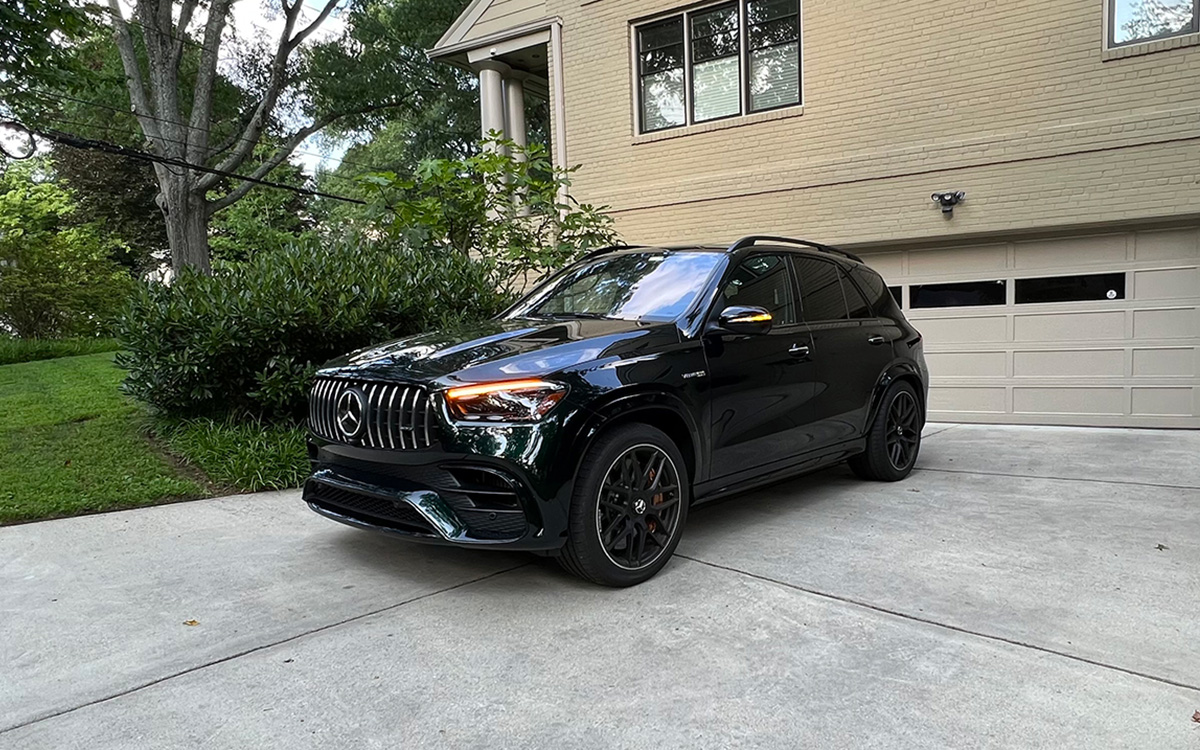
Autos
Glam rides: BMW X6 and Range Rover Velar
Impressive standard features elevate these lower-priced options
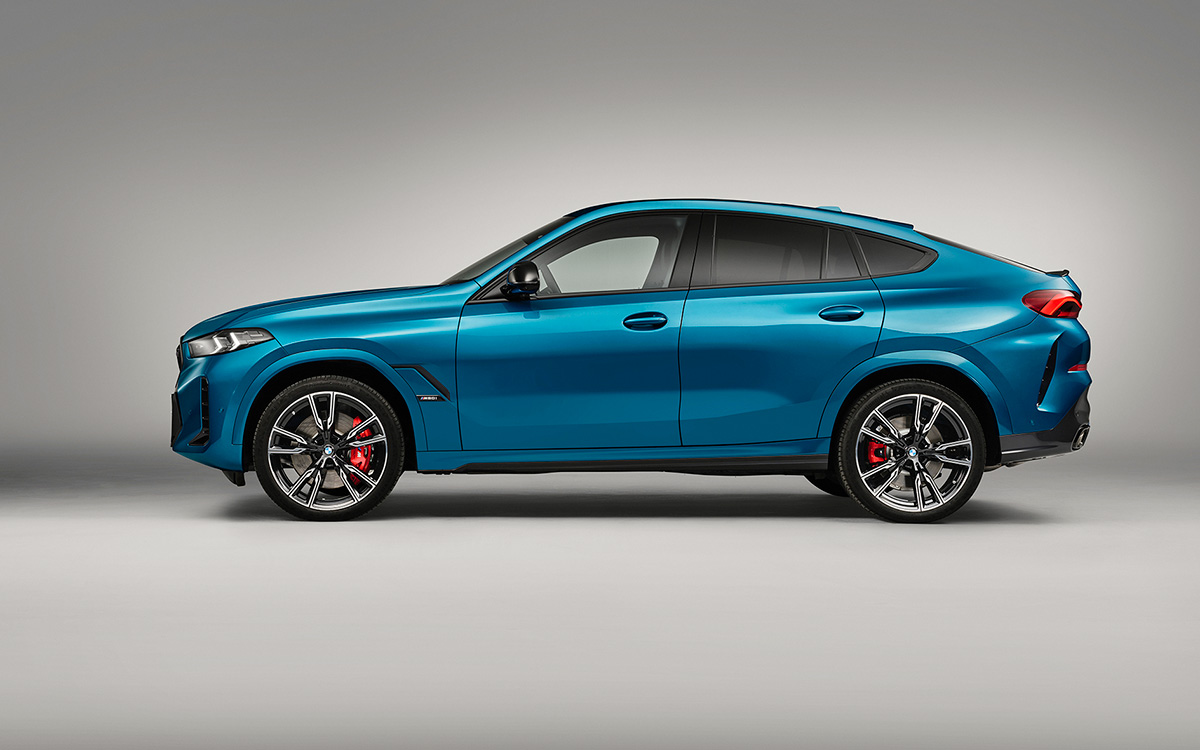
Many sport-utes with ho-hum styling still impress me by offering scads of standard features and a low MSRP. But sometimes it’s hard not to be seduced by what I call glam rides—pricier vehicles with plenty of attitude. You know, like something Cassandro might drive.
BMW X6
$75,000
MPG: 23 city/26 highway
0 to 60 mph: 5.2 seconds
Maximum cargo room: 59.6 cu. ft.
PROS: Outré styling, posh cabin, raw power
CONS: Less rear visibility, limited storage, costly options
IN A NUTSHELL: Trust me, it’s hard not to fall in love with a BMW X6. This recently updated crossover, with its coupe-like profile, swept-back grille and breathtaking acceleration, had me at hello. High ground clearance and oodles of high-tech features turn this high-end hauler into one helluva wild ride.
Sure, the sharply sloped roof hampers rear-seat headroom and cargo capacity. But up front there’s more room than expected, along with a dramatically curved digital dashboard. And the ginormous panoramic moonroof helps make the interior feel quite spacious.
How good is this BMW? Zipping up to Baltimore last month during a day of downpours and clueless commuters, my husband and I started rethinking our promise to never buy a budget-busting vehicle. For us, bad weather and heavy traffic usually result in clenched teeth, heavy sighs and my swearing like a sailor. Yet the hushed cabin, 16-way power front seats and ability to control the stereo and other functions simply by waving my hand were all very Zen. Ditto the finely tuned suspension, steering and braking, which anticipated my every move. Instead of shying away from rush hour on our return home, I leaned in.
Myriad safety features — from forward-collision alerts and blind-spot monitors to lane-departure warnings and a 360-degree camera — batted away any concerns about fender benders. Same for the option packages that allow you to park the X6 automatically, store familiar maneuvers and drive hands-free at up to 85 mph.
Power in the base-model — which is what I test drove — comes from a lively 375-hp turbo, with a 48-volt hybrid system to improve gas mileage. There’s also a smooth eight-speed automatic transmission and all-wheel drive for sure handling on slippery roads. Pricing begins at $75,000, but options on my test car brought it up to—whoa!—88,000.
For more grit and growl, there’s the xDrive60i, with a 523-hp twin turbo that helps this Bimmer sprint from 0 to 60 mph in 4.2 seconds. And the top-of-the-line X6 M Competition with a 617-hp V8 is even faster at a blistering 3.7 seconds. But I am much too afraid to drive this gnarly high-test model—it starts at $128,000.
RANGE ROVER VELAR
$63,000
MPG: 19 city/25 highway
0 to 60 mph: 5.2 seconds
Maximum cargo room: 70.1 cu. ft.
PROS: Refined design, chic interior, lotsa storage
CONS: Tepid base engine, more sedate handling, pricey
IN A NUTSHELL: While Range Rovers are known for being oh-so-classy, the Velar is much sassier than the rest of the lineup.
The sweeping front fascia would make Ariana Grande proud: Svelte grille, sporty wraparound headlights and stretched, corset-like air ducts in the bumper.
Inside, the look is spartan but elegant. All knobs and other switchgear are mostly hidden or activated by an 11.4-inch infotainment touchscreen that seems to hover in front of the dash. Even the ubiquitous cruise control and stereo buttons on the steering wheel seem to have vanished, though look closer and they are tastefully integrated into the design.
While the Velar may be classified as a compact vehicle, it looks and feels much larger. Compared with the midsize BMW X6, both have ample seating for five people. Front-seat dimensions are practically the same, but the supposedly smaller Range Rover has better back-seat headroom and legroom. It also holds almost 20% more cargo.
Built on the same platform as the popular Jaguar F-Pace, the Velar has a relaxed ride compared to the more athletic BMW X6. Power is less aggressive on the Range Rover, with choice of two competent but hardly rip-roaring engines.
Build quality is impressive, including the optional leather-free interior that uses an upscale composite of wool and polyurethane. And while even the base-model comes with interior ambient lighting and a premium Meridian stereo, you can opt for the 17-speaker 3D system for an even more “Maestro”-like experience.
Overall, the Velar may be less of a rabble rouser than the BMW X6, but there’s still plenty here to dazzle the senses.
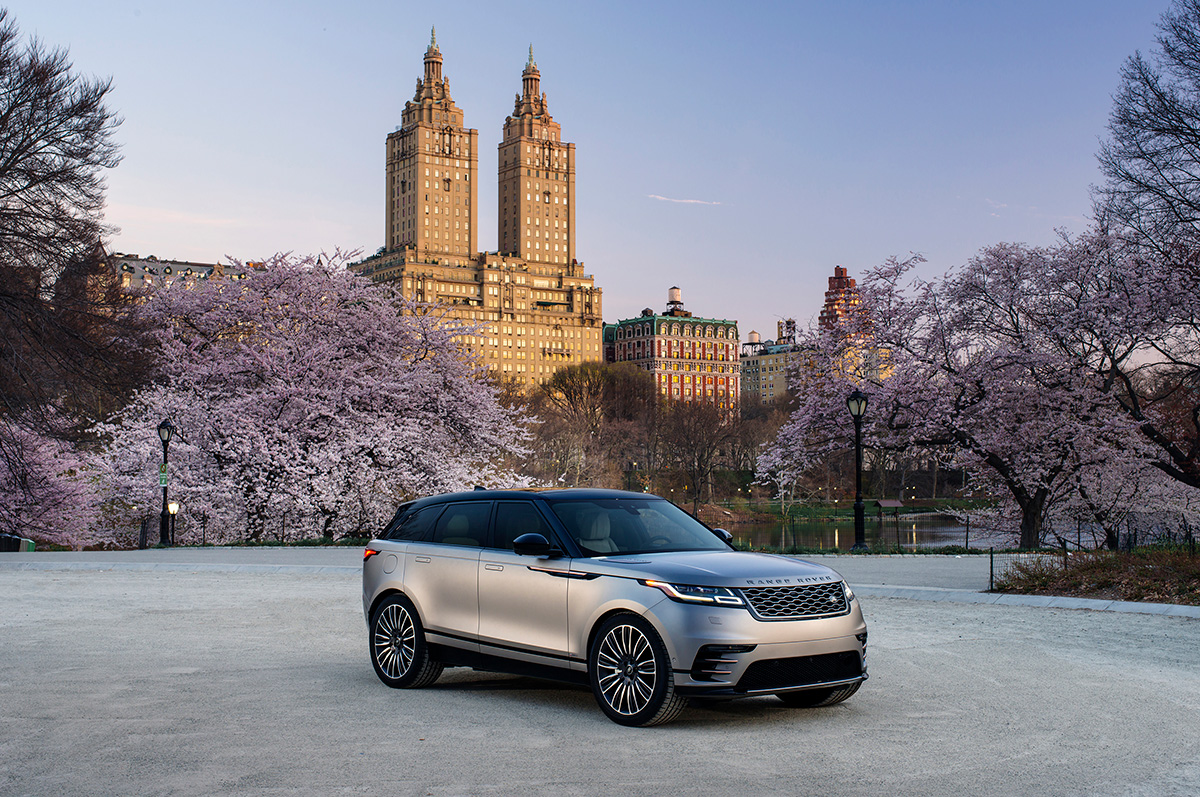
Autos
Rugged yet ritzy: Ford Bronco, Nissan Pathfinder
One offers retro design, the other an edgy and chic look
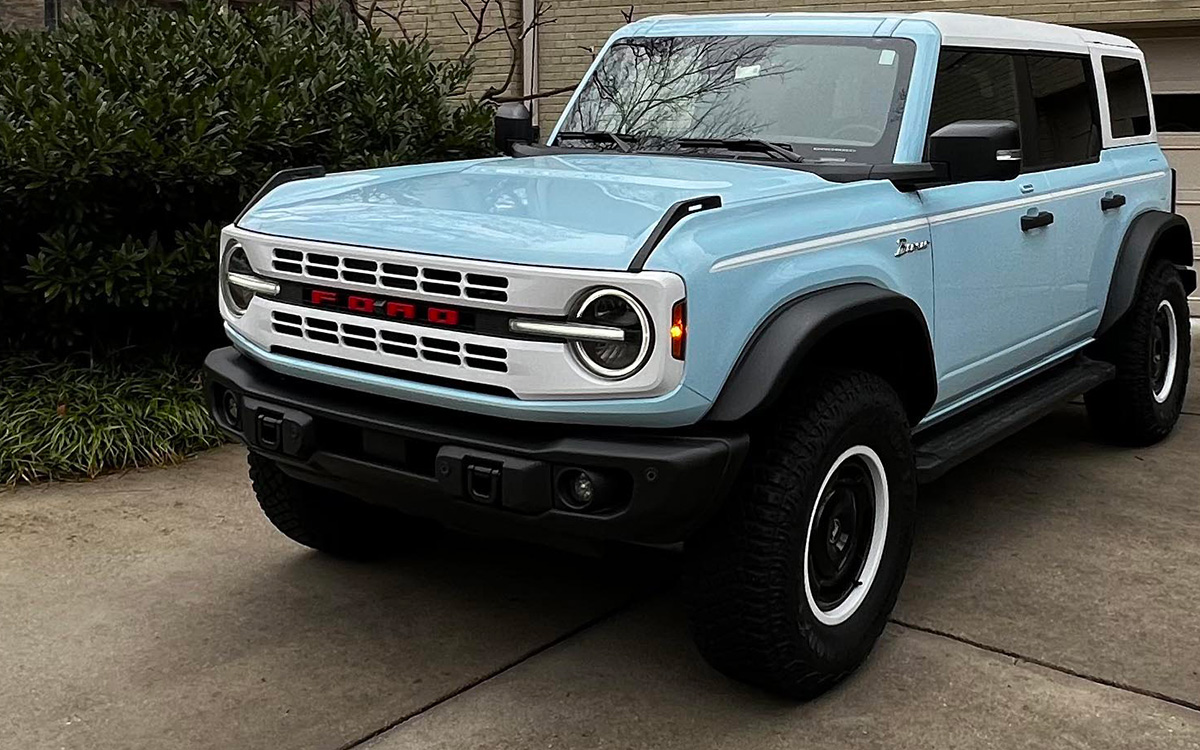
Both the Ford Bronco and Nissan Pathfinder have rough-and-ready reputations. Each boasts butch bona fides and some nifty off-road capability. But dig a bit deeper into your wallet, and you can step up to higher trim levels for added power and a bit more bling.
FORD BRONCO HERITAGE LIMITED EDITION
$70,000
MPG: 17 city/17 highway
0 to 60 mph: 6.2 seconds
Maximum cargo room: 77.6 cu. ft.
PROS: Retro design, rousing engine rumble, myriad amenities
CONS: Low fuel economy, bouncy ride, pricey
IN A NUTSHELL: After a 24-year hiatus, the Ford Bronco came galloping back to showrooms in 2021. Today there are nine trim levels, including the Heritage Limited Edition that I just finished test driving for a week. At $70,000, this Bronco—second only to the $90,000 Raptor—still costs a pretty penny: $30,000 more than the entry-level model. Yet the higher price is worth it, with a gritty V6 turbo that offers much more giddy-up than the standard four-cylinder engine.
There’s also a rad retro design, with heritage-style graphics, multiple skid plates, and special bumpers and fenders. Exterior colors—especially the Robin’s Egg Blue, coupled with a white grille and white roof—are a nice throwback to the 1960s. So are the removable doors and roof panels for a safari-like look à la an old-timey “Wild Kingdom” episode.
Yes, the Bronco is a truck-based SUV, so expect more bounciness than in a Lexus or a Lincoln. But the stable steering and comfortable seats help make up for it. Ground clearance is high, thanks to large 35-inch mud-terrain tires. Luckily, running boards and numerous rubber-lined grab handles make it easy to climb in and out.
Despite the sound-deadening insulation, there’s still a fair amount of exterior wind noise at high speeds. But this makes it easier to hear the sweet sound of the Bronco’s strong whinny, er, exhaust growl.
Along with a vibe that’s decidedly old-school cool, this mid-sizer comes with lots of modern amenities: keyless entry, remote start, heated seats, ambient lighting, dual-zone automatic climate control, 360-degree surround-view camera and 10-speaker premium B&O stereo. New this year is a larger, 12-inch touchscreen. I also liked the huge stowage area, with convenient cargo straps to hold down gear, a flip-up rear window for easy access, and a swing-out door to hold a full-size spare tire.
I guess you could say Ford wasn’t horsing around when it decided to add such a fully loaded Bronco to the stable.
NISSAN PATHFINDER ROCK CREEK
$44,000
MPG: 20 city/23 highway
0 to 60 mph: 7.0 seconds
Maximum cargo room: 80.4 cu. ft.
PROS: Roomy, comfy, muted cabin
CONS: So-so gas mileage, tight third row, many competitors
IN A NUTSHELL: Seeking an SUV that’s more diamonds than denim? Then consider the Nissan Pathfinder, also redesigned just a few years ago and a big step up from the previous model. But instead of retro styling like a Ford Bronco, the look here is a combo of edgy and chic.
That’s especially true with the Rock Creek version, which sports an aggressive front fascia, grille inserts, trendy black cladding, raised off-road suspension, all-terrain tires and tubular roof rack that can hold 220 pounds. “Rock Creek” badging, which is stamped on the side panels and rear liftgate, is also embroidered in stylish orange contrast stitching on the water-resistant seats. All-wheel drive — optional on all other trims — is standard here. And Rock Creek towing capacity, which is 3,500 pounds on most other Pathfinders, is an impressive 6,000 pounds.
The spacious cabin has enough room for up to eight passengers, though third-row legroom is tight. In the second row, you can opt for a pair of captain’s chairs instead of a three-person bench seat. Regardless, those rear seats are heated, which is a nice touch.
Nissan has done a good job of making vehicles that feel as rich and luxurious as those in its high-end Infiniti lineup. On the Pathfinder, that means thicker glass and extra insulation for a whisper-quiet cabin. There’s also brushed-aluminum trim and a sporty flat-bottom steering wheel with paddle shifters. Along with smartphone integration, wireless charging pad and voice-command capability, other tech features include a windshield head-up display, 360-degree bird’s-eye camera, ambient interior lighting, 13-speaker Bose stereo and a slew of safety options.
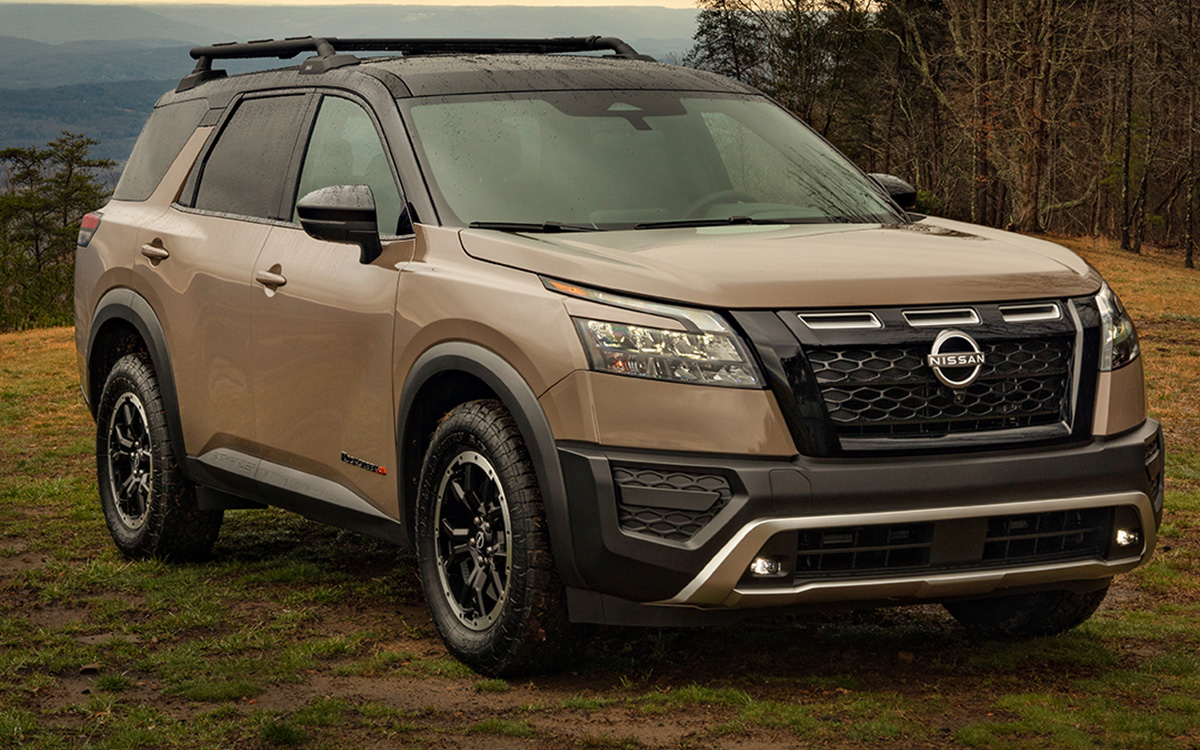
When comparing the Ford Bronco with the Nissan Pathfinder, it’s hard to resist the rip-roaring ride of a fun and feisty Bronco. But the more practical Pathfinder is still plenty adventurous, especially with all the goodies that come in the Rock Creek.
-

 District of Columbia3 days ago
District of Columbia3 days agoCatching up with the asexuals and aromantics of D.C.
-

 South America3 days ago
South America3 days agoArgentina government dismisses transgender public sector employees
-

 Maine4 days ago
Maine4 days agoMaine governor signs transgender, abortion sanctuary bill into law
-

 District of Columbia4 days ago
District of Columbia4 days agoBowser budget proposal calls for $5.25 million for 2025 World Pride






